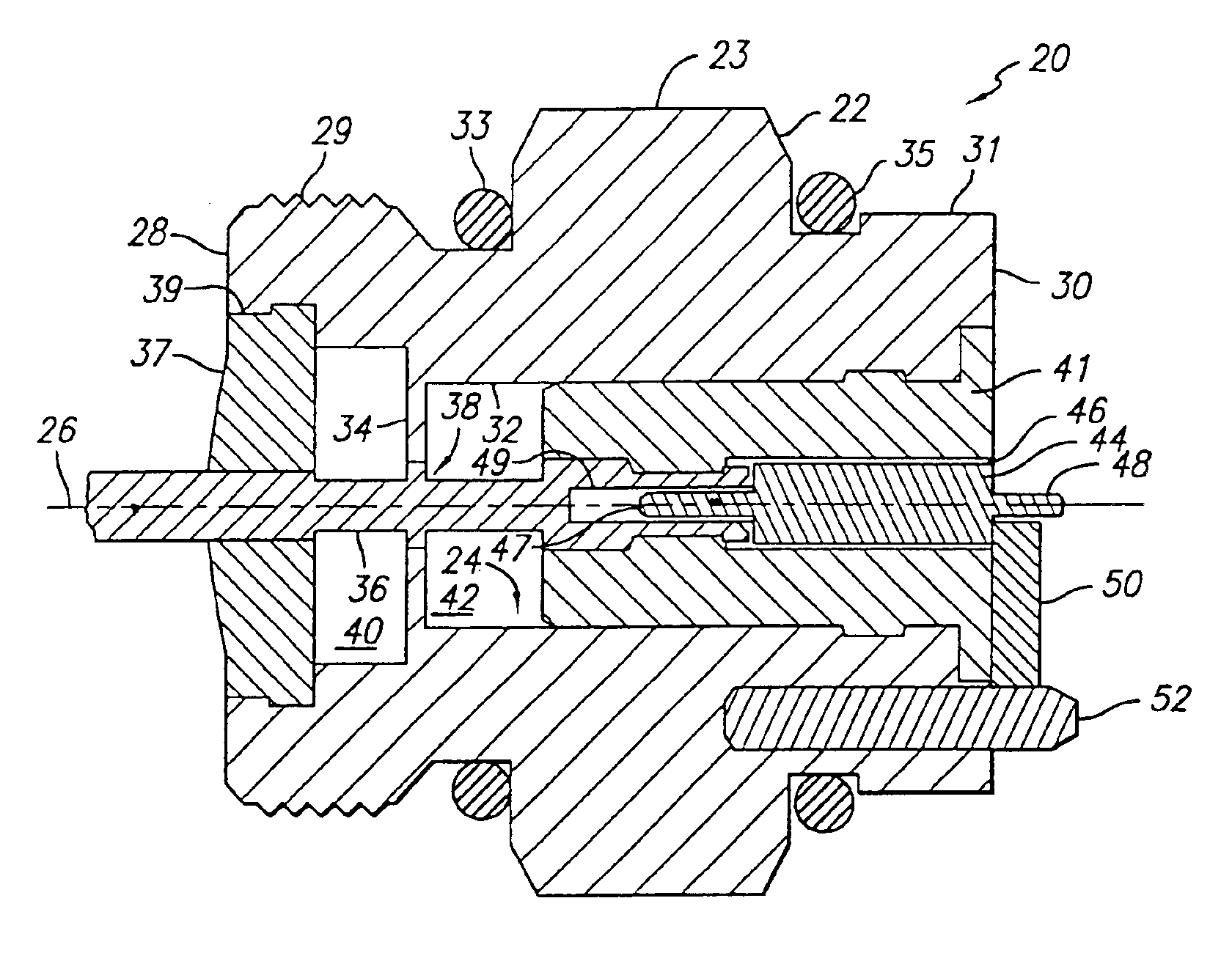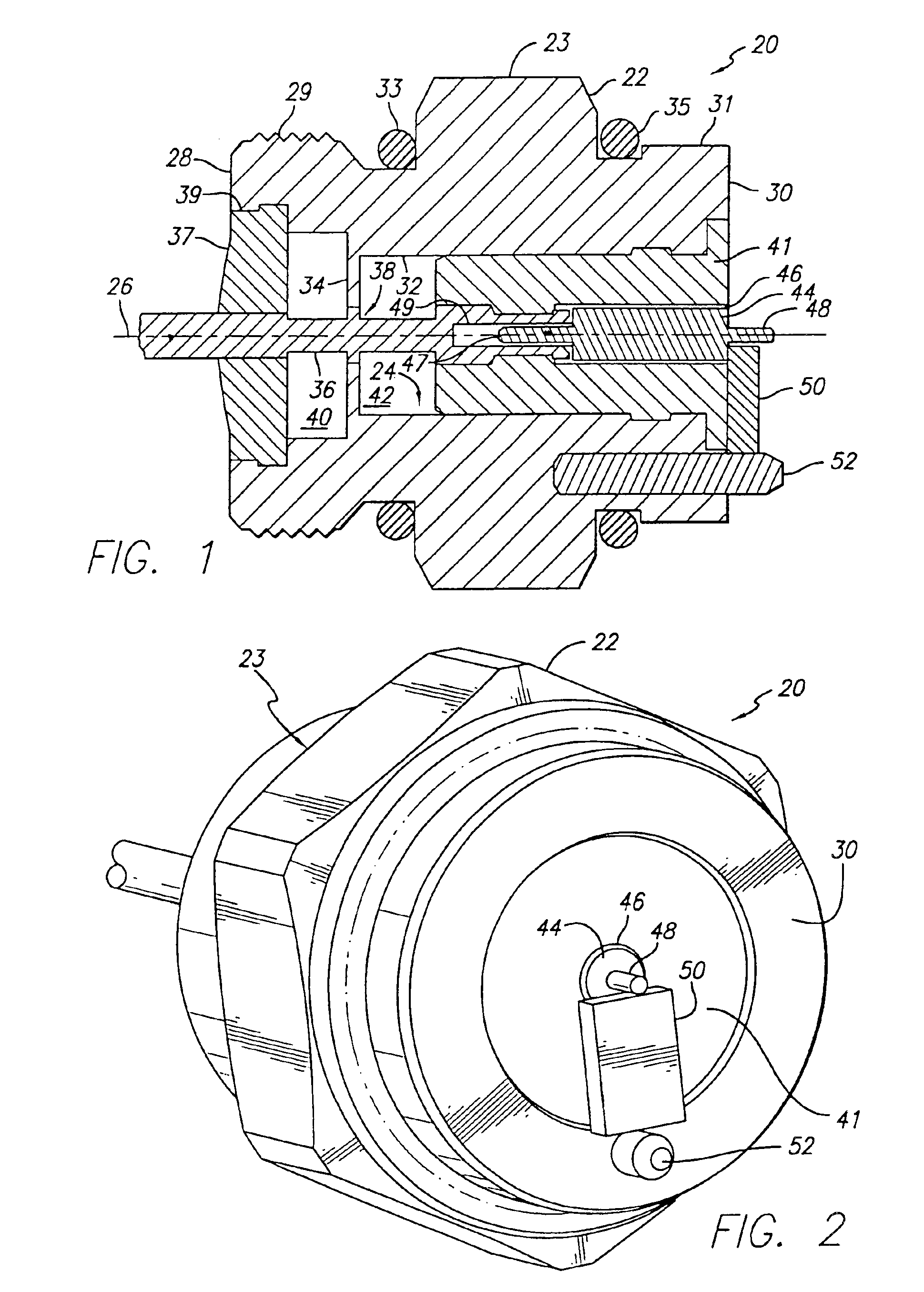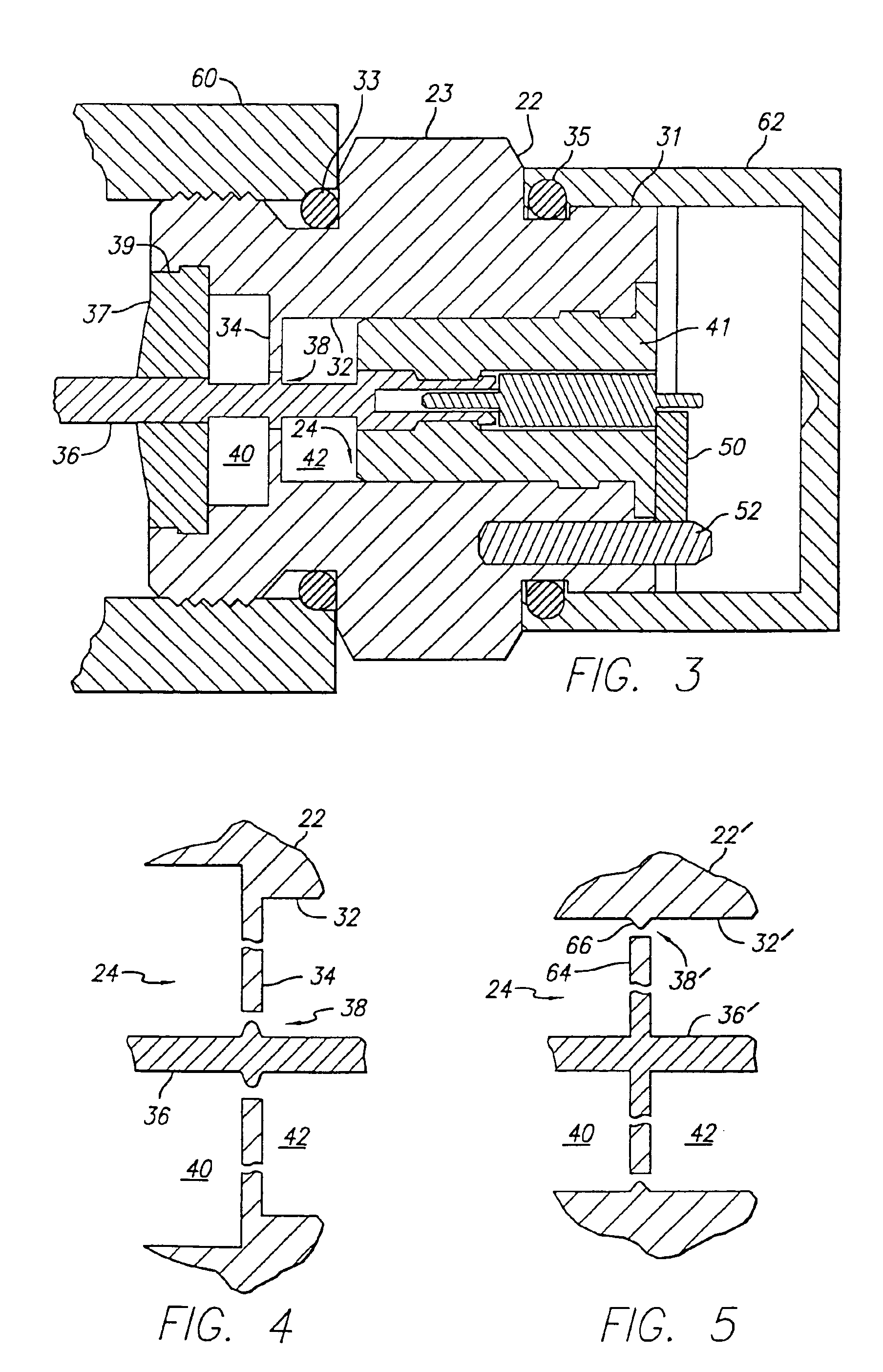Surge protected coaxial termination
a coaxial termination and surge protection technology, applied in the direction of emergency protective arrangements for limiting excess voltage/current, coupling device connection, waveguide type devices, etc., can solve the problems of loss of power transfer, interference with the signal, interference with the proper transmission of the desired radio frequency signal, etc., to avoid damage, capacitors can be relatively small and inexpensive, and the effect of controlling the characteristic impedance environmen
- Summary
- Abstract
- Description
- Claims
- Application Information
AI Technical Summary
Benefits of technology
Problems solved by technology
Method used
Image
Examples
Embodiment Construction
[0032]A surge-protected coaxial termination constructed in accordance with a preferred embodiment of the present invention is shown in FIGS. 1 and 2 and is identified generally therein by reference numeral 20. Coaxial termination device 20 includes a metallic outer body 22 incorporating a hex-shaped outer profile 23 for receiving the jaws of a wrench when coaxial termination device 20 is tightened onto a coaxial port of a transmission line equipment box. Metallic outer body 22 has a central bore 24, or central passage, extending therethrough along a longitudinal axis 26 between a first end 28 and a second end 30 of metallic outer body 22. Central bore 24 is bounded by an inner wall 32. As shown in FIG. 1, an inwardly-directed, radial step 34 extends from inner wall 32 toward central axis 26. This step 34 is relatively short in the sense that its length along central axis 26 is very short by comparison with the axial length of the remaining portion of inner wall 32. Likewise, the inn...
PUM
 Login to View More
Login to View More Abstract
Description
Claims
Application Information
 Login to View More
Login to View More - R&D
- Intellectual Property
- Life Sciences
- Materials
- Tech Scout
- Unparalleled Data Quality
- Higher Quality Content
- 60% Fewer Hallucinations
Browse by: Latest US Patents, China's latest patents, Technical Efficacy Thesaurus, Application Domain, Technology Topic, Popular Technical Reports.
© 2025 PatSnap. All rights reserved.Legal|Privacy policy|Modern Slavery Act Transparency Statement|Sitemap|About US| Contact US: help@patsnap.com



